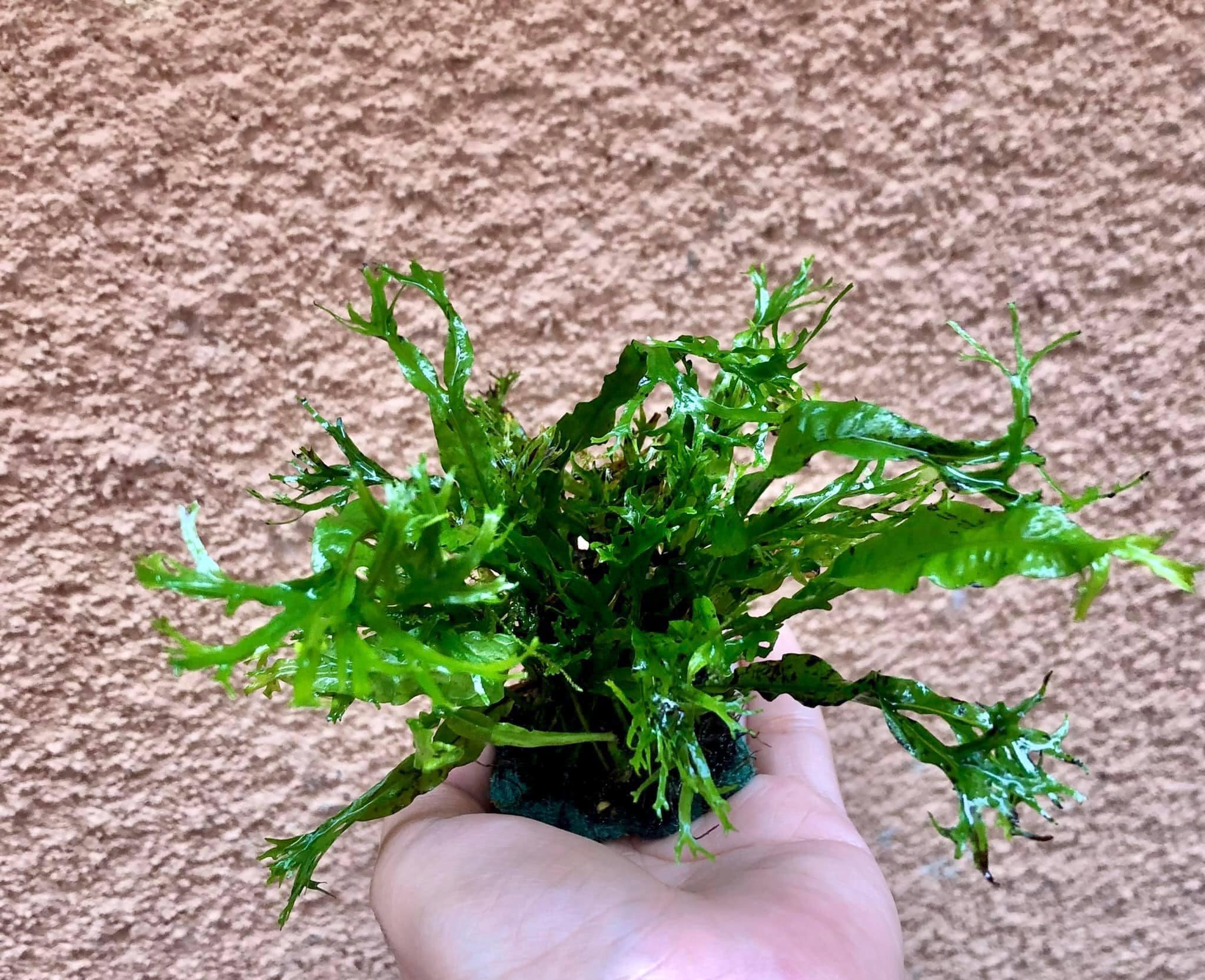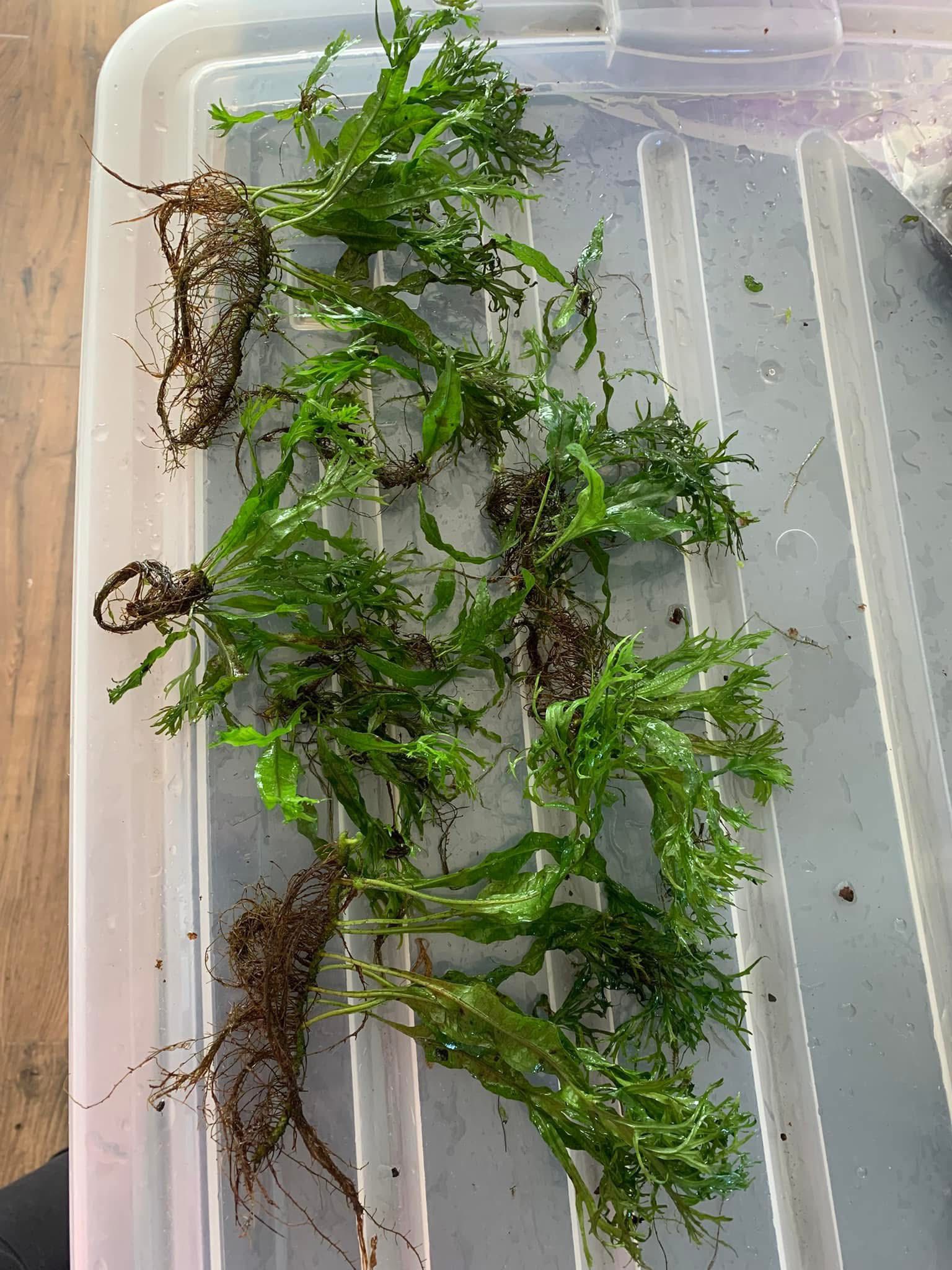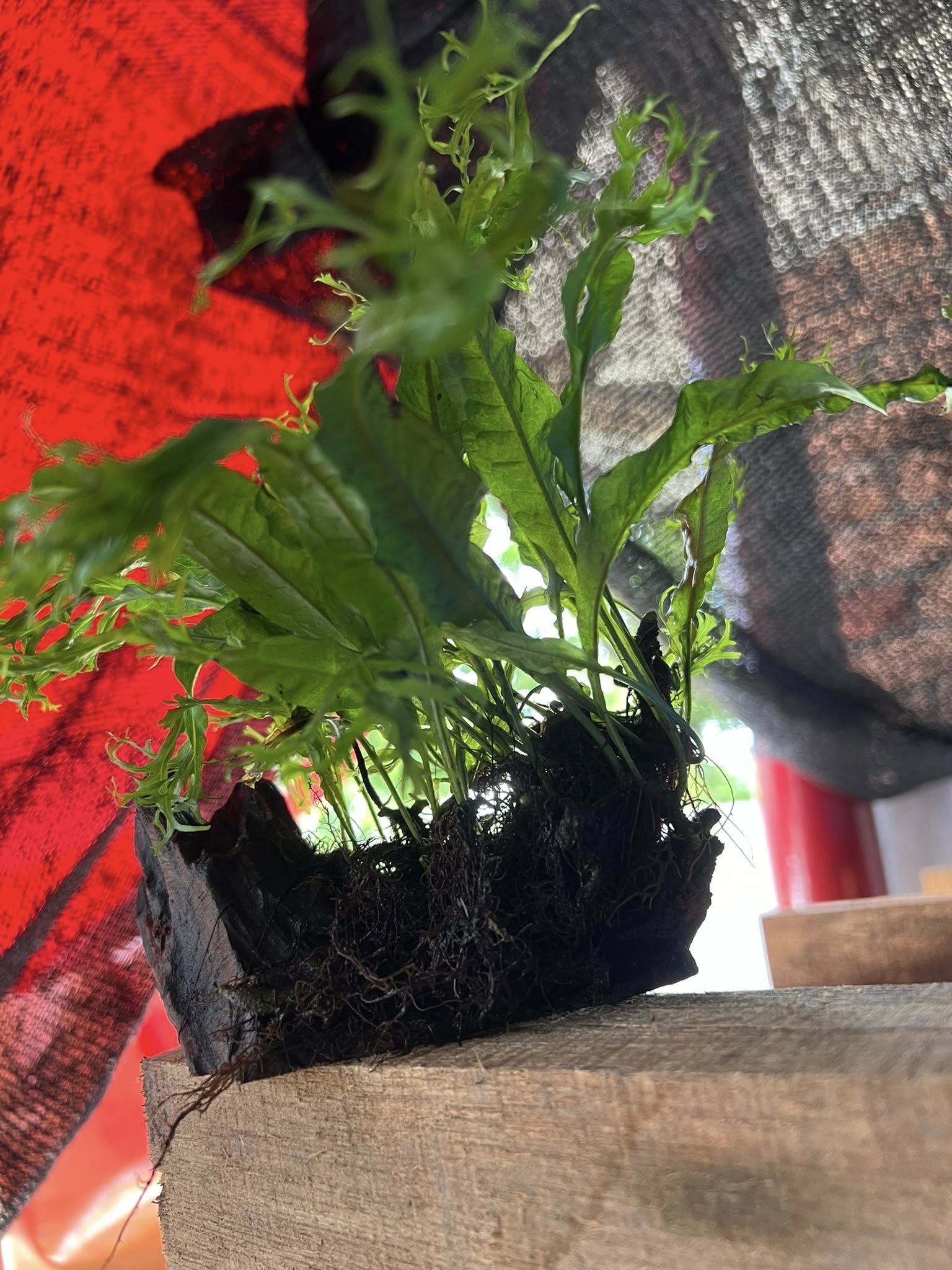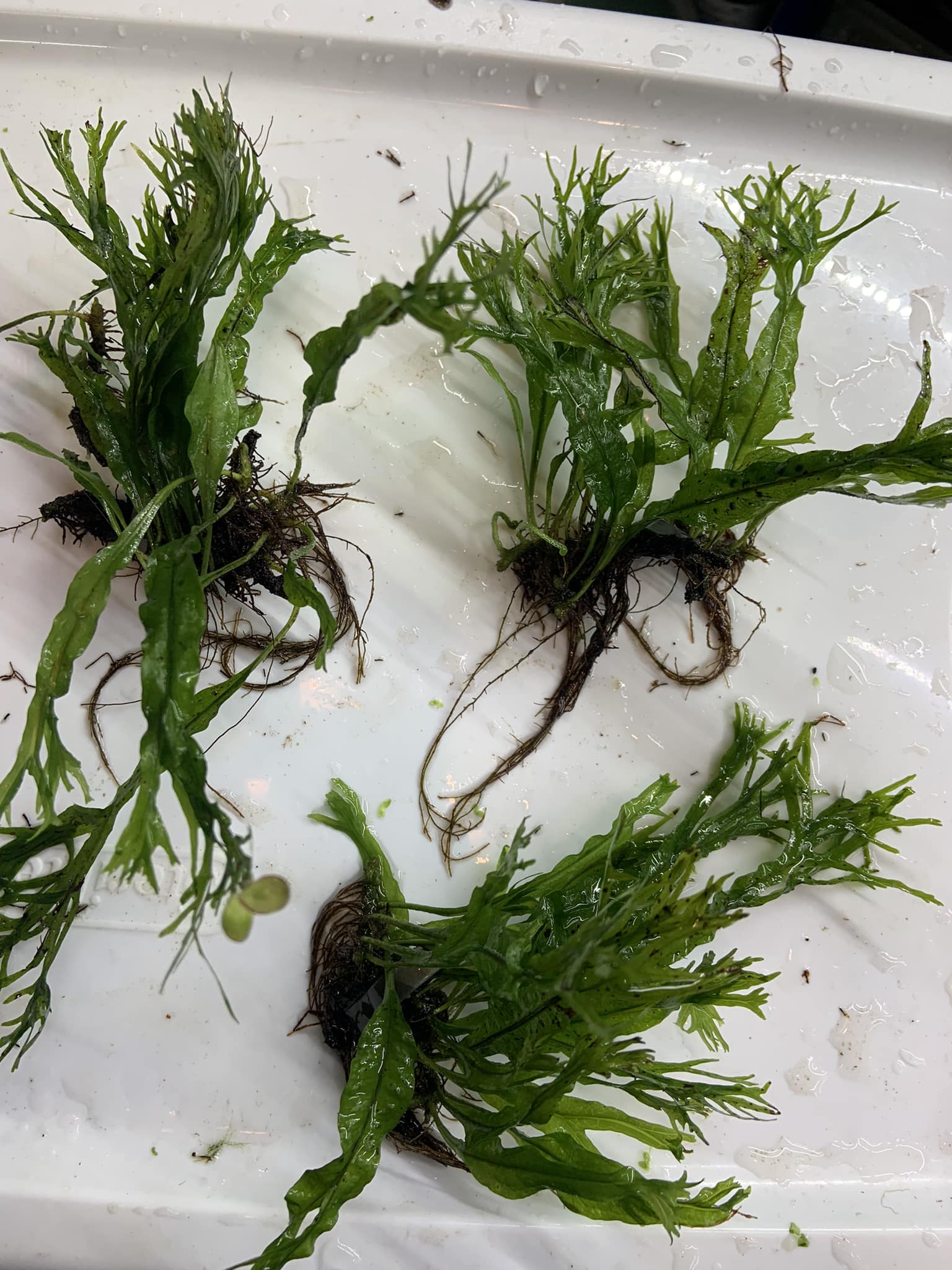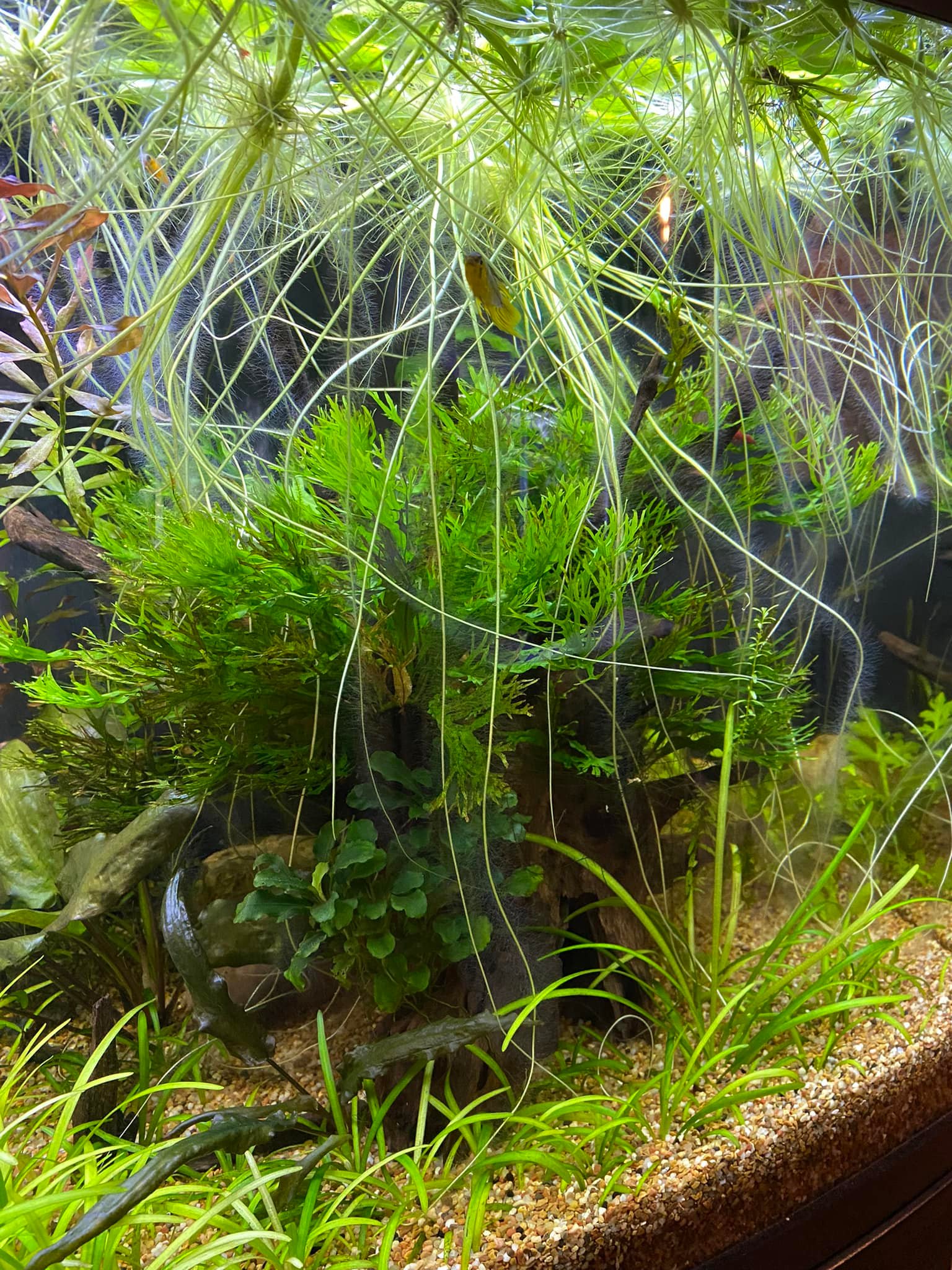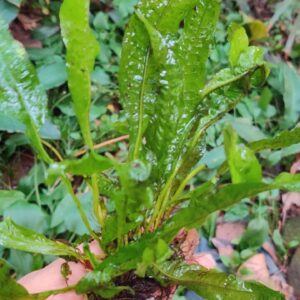$6.00
Java fern lace is a variant of java fern with the ends of its leaves split into three thin leaves giving it a lacey, bushy effect.
200 in stock
Description
Microsorium pteropus v. Windelov
Java fern lace is a variant of java fern with the ends of its leaves split into three thin leaves giving it a lacey, bushy effect.
Java fern naturally develops black spores on the underside of their leaves as part of their reproductive cycle. These spores may grow into baby plants that can be removed, when large enough, and planted elsewhere in the aquarium.
When planting, never bury the rhizome in the substrate or gravel as it leads to rot and blackened leaves It is best to attach to driftwood or rocks. Java ferns get their nutrients through the water column. Potassium is a crucial nutrient for healthy, lush foliage. Signs of potassium deficiency include brown holes in leaves or overall stunted growth. Regularly dosing with a comprehensive liquid fertilizer or Potassium supplement will help it thrive.
🌿 Java Fern ‘Windelov’ (Microsorum pteropus ‘Windelov’)
General Information:
-
Family: Polypodiaceae
-
Common Name: Java Fern Windelov
-
Scientific Name: Microsorum pteropus ‘Windelov’
-
Origin: Southeast Asia (cultivar developed in Europe)
-
Growth Type: Rhizomatous aquatic fern
Appearance:
-
Leaves: Bright green with finely branched bushy tips resembling deer antlers or frilly lace. This gives the plant a delicate and highly ornamental look.
-
Size: Typically grows to about 15–20 cm (6–8 inches) in height and width, depending on tank conditions.
-
Growth Habit: Slow-growing and compact; suitable for foreground or midground placement in aquascapes.
Care Requirements:
-
Light: Low to moderate; does not require intense lighting to thrive.
-
CO₂: Not necessary, but growth can be enhanced with CO₂ supplementation.
-
Water Parameters:
-
Temperature: 20–28°C (68–82°F)
-
pH: 6.0–7.5
-
Hardness: Soft to moderately hard water
-
Planting Tips:
-
Do not bury the rhizome in the substrate — it should be tied or glued to rocks, driftwood, or other hard surfaces. Burying the rhizome can cause rot.
-
Propagation: Easily propagated by dividing the rhizome or from plantlets that form on older leaves.
Aquascaping Use:
-
Excellent for natural-style tanks or low-maintenance aquascapes.
-
Ideal for beginners due to its hardiness and low demands.
-
Often used in shrimp tanks or community aquariums.
Additional information
| Weight | .2 kg |
|---|

